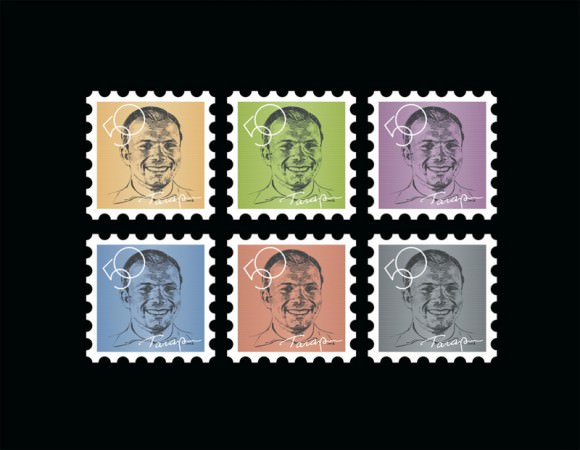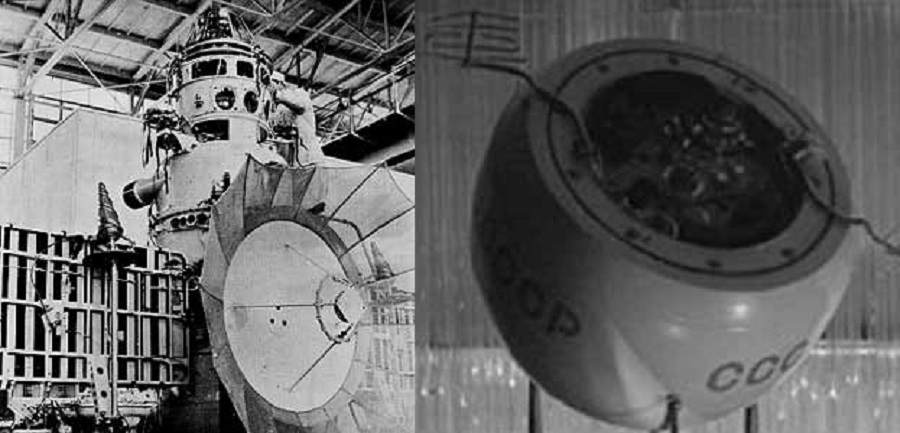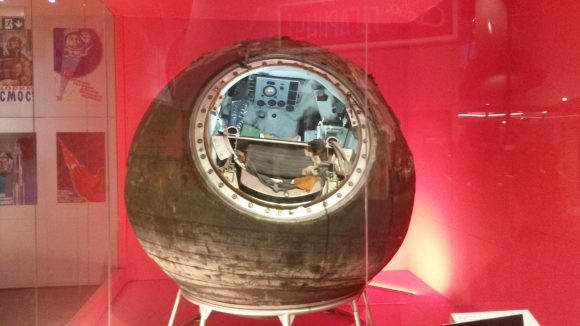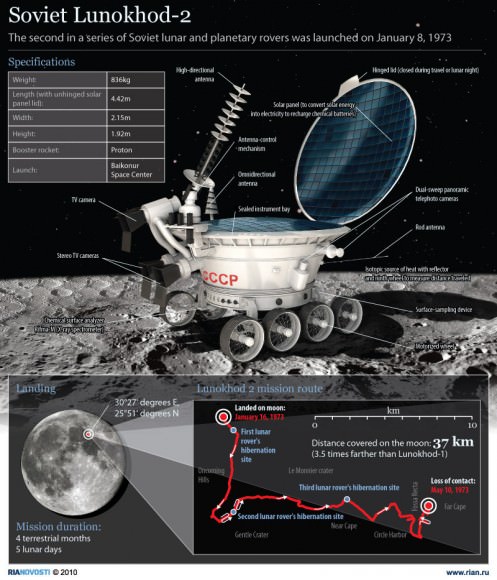A ghost from the old Soviet space program may return to Earth in the coming years. Mimicking a campy episode of the 70s series The Six Million Dollar Man, a Soviet Venus lander stranded in Earth orbit will eventually reenter the atmosphere, perhaps as early as late 2019. Fortunately, this isn’t the “Venus Death Probe” that the Bionic Man Steve Austin had to defeat, but Kosmos 482 is part of a fascinating forgotten era of the Space Age and one you can track down in the night sky, with a little skill and patience.
Continue reading “Spot Failed Soviet Venus Probe Kosmos 482 in Earth Orbit”Who Was The First Woman To Go Into Space?

When it comes to the “Space Race” of the 1960s, several names come to mind. Names like Chuck Yeager, Yuri Gagarin, Alan Shepard, and Neil Armstrong, but to name a few. These men were all pioneers, braving incredible odds and hazards in order to put a man into orbit, on the Moon, and bring humanity into the Space Age. But about the first women in space?
Were the challenges they faced any less real? Or were they even more difficult considering the fact that space travel – like many professions at the time – was still thought to be a “man’s game”? Well, the first woman to break this glass ceiling was Valentina Tereshkova, a Soviet Cosmonaut who has the distinction of being the first woman ever to go into space as part of the Vostok 6 mission.
Early Life:
Tereshkova was born in the village of Maslennikovo in central Russia (about 280 km north-east of Moscow) after her parents migrated from Belarus. Her father was a tractor driver and her mother worked in a textile plant. Her father became a tank officer and died during the Winter War (1939-1940) when the Soviet Union invaded Finland over a territorial dispute.

Between 1945 to 1953, Tereshkova went to school but dropped out when she was sixteen, and completed her education through correspondence. Following in her mother’s footsteps, she began working at a textile factory, where she remained until becoming part of the Soviet cosmonaut program.
She became interested in parachuting from a young age and trained in skydiving at the local Aeroclub. In 1959, at the age of 22, she made her first jump. It was her expertise in skydiving that led to her being selected as a cosmonaut candidate a few years later. In 1961, she became the secretary of the local Komsomol (Young Communist League) and later joined the Communist Party of the Soviet Union.
Vostok Program:
Much like Yuri Gagarin, Tereshkova took part in the Vostok program, which was the Soviet Unions’ first attempt at putting crewed missions into space. After the historic flight of Gagarin in 1961, Sergey Korolyov – the chief Soviet rocket engineer – proposed sending a female cosmonaut into space as well.
At the time, the Soviets believed that sending women into space would achieve a propaganda victory against the U.S., which maintained a policy of only using military and test pilots as astronauts. Though this policy did not specifically discriminate on the basis of gender, the lack of women combat and test pilots effectively excluded them from participating.
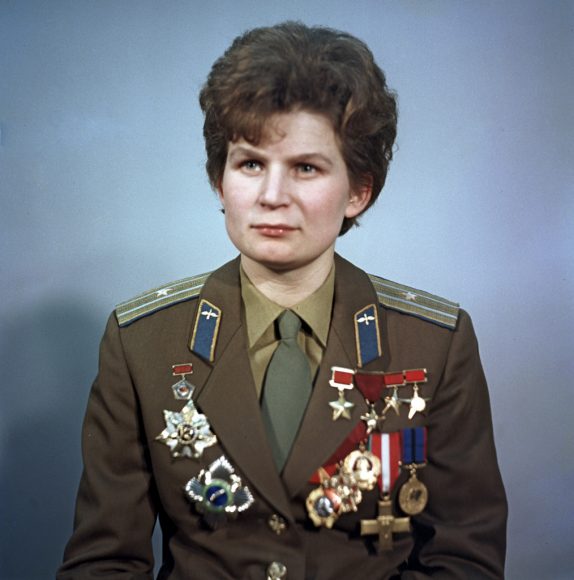
In April 1962, five women were chosen for the program out of hundreds of potential candidates. These included Tatyana Kuznetsova, Irina Solovyova, Zhanna Yorkina, Valentina Ponomaryova, and Valentina Tereshkova. In order to qualify, the women needed to be parachutists under 30 years of age, under 170 cm (5’7″) in height, and under 70 kg (154 lbs.) in weight.
Along with four colleagues, Tereshkova spent several months in training. This included weightless flights, isolation tests, centrifuge tests, rocket theory, spacecraft engineering, parachute jumps, and pilot training in jet aircraft. Their examinations concluded in November 1962, after which Tereshkova and Ponomaryova were considered the leading candidates.
A joint mission profile was developed that would see two women launched into space on separate Vostok missions in March or April of 1963. Tereshkova, then 25, was chosen to be the first woman to go into space, for multiple reasons. First, there was the fact that she conformed to the height and weight specifications to fit inside the relatively cramped Vostok module.
Second, she was a qualified parachutist, which given the nature of the Vostok space craft (the re-entry craft was incapable of landing) was absolutely essential. The third, and perhaps most important reason, was her strong “proletariat” and patriotic background, which was evident from her family’s work and the death of her father (Vladimir Tereshkova) during the Second World War.
Originally, the plan was for Tereshkova to launch first in the Vostok 5 ship while Ponomaryova would follow her into orbit in Vostok 6. However, this flight plan was altered in March 1963, with a male cosmonaut flying Vostok 5 while Tereshkova would fly aboard Vostok 6 in June 1963. After watching the successful launch of Vostok 5 on 14 June, Tereshkova (now 26) began final preparations for her own flight.
Launch:
Tereshkova’s Vostok 6 flight took place on the morning of June 16th, 1963. After performing communications and life support checks, she was sealed inside the capsule and the mission’s two-hour countdown began. The launch took place at 09:29:52 UTC with the rocket lifting off faultlessly from the Baikonur launchpad.
During the flight – which lasted for two days and 22 hours – Tereshkova orbited the Earth forty-eight times. Her flight took place only two days after Vostok 5 was launched, piloted by Valery Bykovsky, and orbited the Earth simultaneously with his craft. In the course of her flight, ground crews collected data on her body’s reaction to spaceflight.
Aside from some nausea (which she later claimed was due to poor food!) she maintained herself for the full three days. Like other cosmonauts on Vostok missions, she kept a flight log and took photographs of the horizon – which were later used to identify aerosol layers within the atmosphere – and manually oriented the spacecraft.
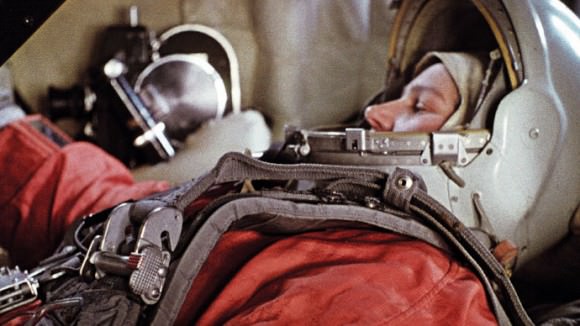
On the first day of her mission, she reported an error in the control program, which made the spaceship ascend from orbit instead of descending. The team on Earth provided Tereshkova with new data to enter into the descent program which corrected the problem. After completing 48 orbits, her craft began descending towards Earth.
Once the craft re-entered the atmosphere, Tereshkova ejected from the capsule and parachuted back to earth. She landed hard after a high wind blew her off course, which was fortunate since she was descending towards a lake at the time. However, the landing caused her to seriously bruise her face, and heavy makeup was needed for the public appearances that followed.
Vostok 6 would be the last of the Vostok missions, despite there being plans for further flights involving women cosmonauts. None of the other four in Tereshkova’s early group got a chance to fly, and, in October of 1969, the pioneering female cosmonaut group was dissolved. It would be 19 years before another woman would fly as part of the Soviet space program – Svetlana Savitskaya, who flew as part of the Soyuz T-7 mission.
After Vostok 6:
After returning home, certain elements within the Soviet Air Force attempted to discredit Tereshkova. There were those who said that she was drunk when she reported to the launch pad and was insubordinate while in orbit. These charges appeared to be related to the sickness she experienced while in space, and the fact that she issued corrections to the ground control team – which was apparently seen as a slight.

She was also accused of drunken and disorderly conduct when confronting a militia Captain in Gorkiy. However, General Nikolai Kamanin – the head of cosmonaut training in the Soviet space program at the time – defended Tereshkova’s character and dismissed her detractors instead. Tereshkova’s reputation remained unblemished and she went on to become a cosmonaut engineer and spent the rest of her life in key political positions.
In November of 1963, Tereshkova married Andrian Nikolayev, another Soviet cosmonaut, at a wedding that took place at the Moscow Wedding Palace. Khrushchev himself presided, with top government and space program leaders in attendance. In June of 1964, she gave birth to their daughter Elena Andrianovna Nikolaeva-Tereshkova, who became the first person in history to have both a mother and father who had traveled into space.
She and Nikolayev divorced in 1982, and Nikolayev died in 2004. She went on to remarry an orthopaedist named Yuliy G. Sharposhnikov, who died in 1999. After her historic flight, Tereshkova enrolled at the Zhukovsky Air Force Academy and graduated with distinction as a cosmonaut engineer. In 1977, she earned her doctorate in engineering.
Her fame as a cosmonaut also led to several key political positions. Between 1966 and 1974, she was a member of the Supreme Soviet of the Soviet Union. She was also a member of the Presidium of the Supreme Soviet from 1974 to 1989, and a Central Committee Member from 1969 to 1991. Her accomplishments also led to her becoming a representative of the Soviet Union abroad.
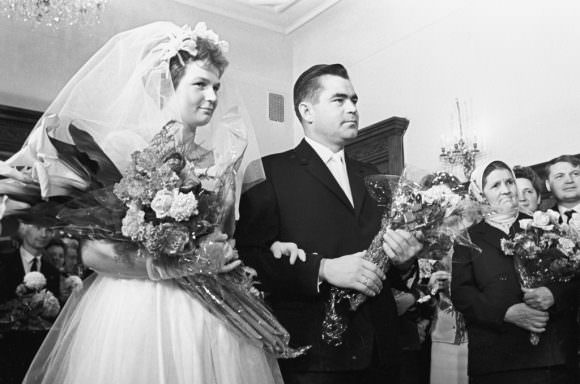
In addition to becoming a member of the World Peace Council in 1966, the vice president of the International Women’s Democratic Federation and president of the Soviet-Algerian Friendship Society. She also represented the Soviet Union at the UN Conference for the International Women’s Year in Mexico City in 1975 and led the Soviet delegation to the World Conference on Women in Copenhagen.
After the collapse of the Soviet Union, Tereshkova lost her political office but remained an important public figure. To this day, she is revered as a hero and a major contributor to the Russian space program. In 2011, she was elected to the State Duma (the lower house of the Russian legislature) where she continues to serve.
In 2008, Tereshkova was invited to Prime Minister Vladimir Putin’s residence in Novo-Ogaryovo for the celebration of her 70th birthday. In that same year, she became a torchbearer of the 2008 Summer Olympics torch relay in Saint Petersburg, Russia. She has also expressed interest in traveling to Mars, even if it were a one-way trip.
Legacy and Honors:
For her accomplishments, Tereshkova has received many honors and awards. She has been decorated with the Hero of the Soviet Union medal (the USSR’s highest award) as well as the Order of Lenin, the Order of the October Revolution, and many other medals.
Foreign governments have also awarded her with the Karl Marx Order, the Hero of Socialist Labor of Czechoslovakia, the Hero of Labor of Vietnam, the Hero of Mongolia, the UN Gold Medal of Peace, and the Simba International Women’s Movement Award. She has honorary citizenship in multiple cities from Bulgaria, Slovakia, Belarus and Mongolia in the east, to Switzerland, France, and the UK in the west.
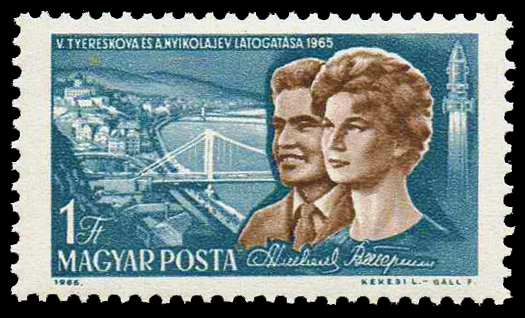
Due to her pioneering role in space exploration, a number of astronomical objects and features are named in her honor. For example, the Tereshkova crater on the far side of the Moon was named after her. The minor planet 1671 Chaika (which translates to “Seagull” in Russian) is named in honor of her Vostok 6 mission call sign.
Numerous monuments and statues have been erected in her honor and the Monument to the Conquerors of Space in Moscow features her image. Streets all across the former Soviet Union and Eastern Bloc nations were renamed in her honor, as was the school in Yaroslavl where she studied as a child. The Yaroslavl Planetarium, built in 2011, was created in her honor, and the Museum of V.V. Tereshkova – Cosmos exists near her native village of Maslennikovo.
The Space Age was a time of truly amazing accomplishments. Not only did astronauts like Tereshkova break the surly bonds of Earth, but they also demonstrated that space exploration knows no gender restrictions. And though it would be decades before people like Svetlana Savitskaya and Sally Ride would into space, Tereshkova will forever be remembered as the woman who blazed the trail for all female astronauts.
We have written many articles about Valentina Tereshkova for Universe Today. Here’s Who are the Most Famous Astronauts?, From Space to the Olympics, What is the Space Age?, Who was the First Man to go into Space?, Who was the First Dog to go into Space?, Who was the First Monkey to go into Space?, and How Many Dogs Have been into Space?
If you’d like more info on Valentina Tereshkova, check out NASA StarChild: Valentina Tereshkova, and here’s a link to NASA Imagine the Universe: First Women in Space.
Astronomy Cast also has some good episodes on the subject. Here’s Episode 124: Space Capsules. Part I – Vostok, Mercury and Gemini.
Sources:
What is the Mars Curse?
Last week, ESA’s Schiaparelli lander smashed onto the surface of Mars. Apparently its descent thrusters shut off early, and instead of gently landing on the surface, it hit hard, going 300 km/h, creating a 15-meter crater on the surface of Mars.
Fortunately, the orbiter part of ExoMars mission made it safely to Mars, and will now start gathering data about the presence of methane in the Martian atmosphere. If everything goes well, this might give us compelling evidence there’s active life on Mars, right now.
It’s a shame that the lander portion of the mission crashed on the surface of Mars, but it’s certainly not surprising. In fact, so many spacecraft have gone to the galactic graveyard trying to reach Mars that normally rational scientists turn downright superstitious about the place. They call it the Mars Curse, or the Great Galactic Ghoul.
Mars eats spacecraft for breakfast. It’s not picky. It’ll eat orbiters, landers, even gentle and harmless flybys. Sometimes it kills them before they’ve even left Earth orbit.
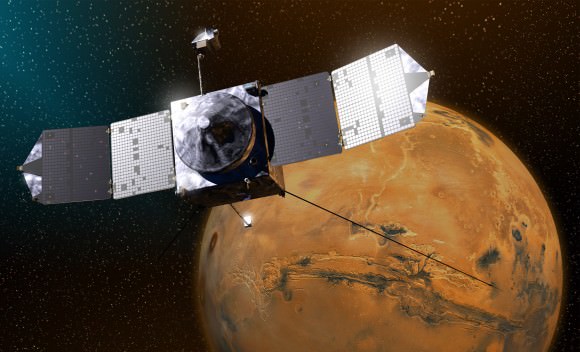
At the time I’m writing this article in late October, 2016, Earthlings have sent a total of 55 robotic missions to Mars. Did you realize we’ve tried to hurl that much computing metal towards the Red Planet? 11 flybys, 23 orbiters, 15 landers and 6 rovers.
How’s our average? Terrible. Of all these spacecraft, only 53% have arrived safe and sound at Mars, to carry out their scientific mission. Half of all missions have failed.
Let me give you a bunch of examples.
In the early 1960s, the Soviets tried to capture the space exploration high ground to send missions to Mars. They started with the Mars 1M probes. They tried launching two of them in 1960, but neither even made it to space. Another in 1962 was destroyed too.
They got close with Mars 1 in 1962, but it failed before it reached the planet, and Mars 2MV didn’t even leave the Earth’s orbit.
Five failures, one after the other, that must have been heartbreaking. Then the Americans took a crack at it with Mariner 3, but it didn’t get into the right trajectory to reach Mars.
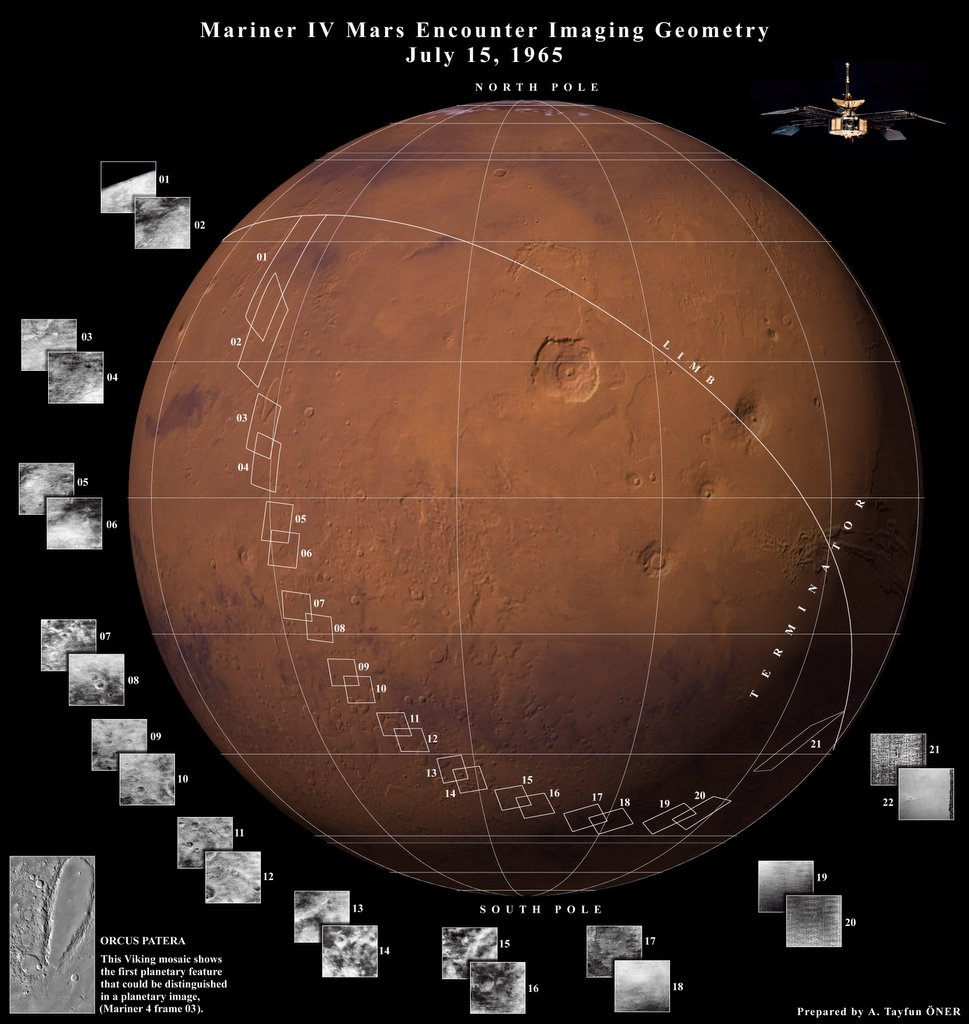
Finally, in 1964 the first attempt to reach Mars was successful with Mariner 4. We got a handful of blurry images from a brief flyby.
For the next decade, both the Soviets and Americans threw all kinds of hapless robots on a collision course with Mars, both orbiters and landers. There were a few successes, like Mariner 6 and 7, and Mariner 9 which went into orbit for the first time in 1971. But mostly, it was failure. The Soviets suffered 10 missions that either partially or fully failed. There were a couple of orbiters that made it safely to the Red Planet, but their lander payloads were destroyed. That sounds familiar.
Now, don’t feel too bad about the Soviets. While they were struggling to get to Mars, they were having wild success with their Venera program, orbiting and eventually landing on the surface of Venus. They even sent a few pictures back.
Finally, the Americans saw their greatest success in Mars exploration: the Viking Missions. Viking 1 and Viking 2 both consisted of an orbiter/lander combination, and both spacecraft were a complete success.
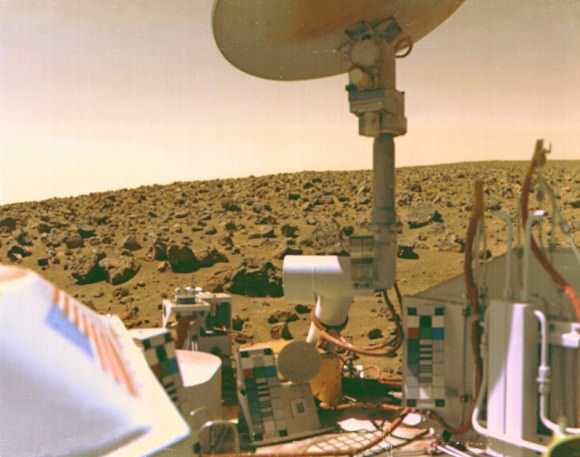
Was the Mars Curse over? Not even a little bit. During the 1990s, the Russians lost a mission, the Japanese lost a mission, and the Americans lost 3, including the Mars Observer, Mars Climate Orbiter and the Mars Polar Lander.
There were some great successes, though, like the Mars Global Surveyor and the Mars Pathfinder. You know, the one with the Sojourner Rover that’s going to save Mark Watney?
The 2000s have been good. Every single American mission has been successful, including Spirit and Opportunity, Curiosity, the Mars Reconnaissance Orbiter, and others.
But the Mars Curse just won’t leave the Europeans alone. It consumed the Russian Fobos-Grunt mission, the Beagle 2 Lander, and now, poor Schiaparelli. Of the 20 missions to Mars sent by European countries, only 4 have had partial successes, with their orbiters surviving, while their landers or rovers were smashed.
Is there something to this curse? Is there a Galactic Ghoul at Mars waiting to consume any spacecraft that dare to venture in its direction?
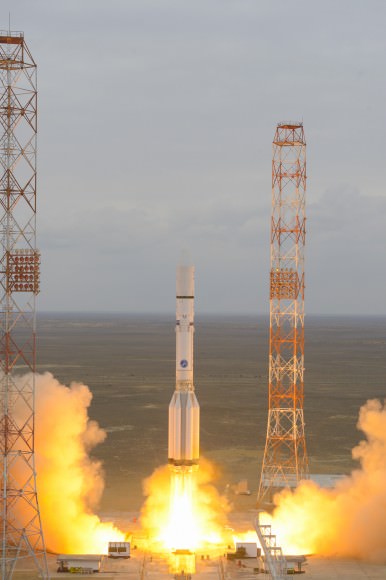
Flying to Mars is tricky business, and it starts with just getting off Earth. The escape velocity you need to get into low-Earth orbit is about 7.8 km/s. But if you want to go straight to Mars, you need to be going 11.3 km/s. Which means you might want a bigger rocket, more fuel, going faster, with more stages. It’s a more complicated and dangerous affair.
Your spacecraft needs to spend many months in interplanetary space, exposed to the solar winds and cosmic radiation.
Arriving at Mars is harder too. The atmosphere is very thin for aerobraking. If you’re looking to go into orbit, you need to get the trajectory exactly right or crash onto the planet or skip off and out into deep space.
And if you’re actually trying to land on Mars, it’s incredibly difficult. The atmosphere isn’t thin enough to use heatshields and parachutes like you can on Earth. And it’s too thick to let you just land with retro-rockets like they did on the Moon.
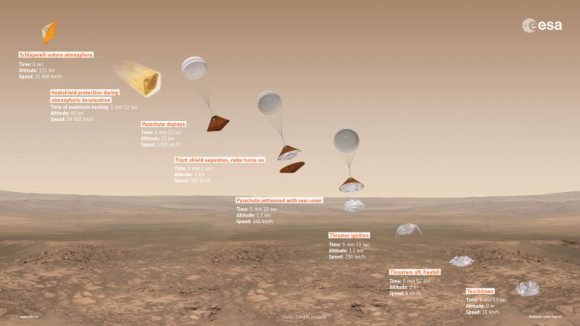
Landers need a combination of retro-rockets, parachutes, aerobraking and even airbags to make the landing. If any one of these systems fails, the spacecraft is destroyed, just like Schiaparelli.
If I was in charge of planning a human mission to Mars, I would never forget that half of all spacecraft ever sent to the Red Planet failed. The Galactic Ghoul has never tasted human flesh before. Let’s put off that first meal for as long as we can.
What Were the First Lunar Landings?
The moment that the Apollo-11 mission touched down on the Moon, followed by Neil Armstrong‘s famous words – “That’s one small step for [a] man, one giant leap for mankind” – is one of the most iconic moments in history. The culmination of years of hard work and sacrifice, it was an achievement that forever established humanity as a space-faring species.
And in the year’s that followed, several more spacecraft and astronauts landed on the Moon. But before, during and after these missions, a number of other “lunar landings” were accomplished as well. Aside from astronauts, a number of robotic missions were mounted which were milestones in themselves. So exactly what were the earliest lunar landings?
Robotic Missions:
The first missions to the Moon consisted of probes and landers, the purpose of which was to study the lunar surface and determine where crewed missions might land. This took place during the 1950s where both the Soviet Space program and NASA sent landers to the Moon as part of their Luna and Pioneer programs.
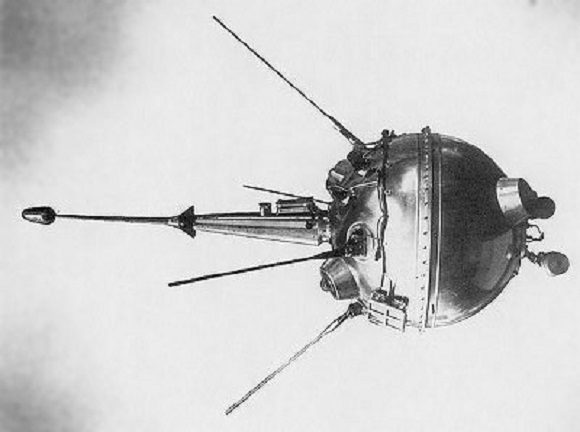
After several attempts on both sides, the Soviets managed to achieve a successful lunar landing on Sept. 14th, 1959 with their Luna-2 spacecraft. After flying directly to the Moon for 36 hours, the spacecraft achieved a hard landing (i.e. crashed) on the surface west of the Mare Serenitatis – near the craters Aristides, Archimedes, and Autolycus.
The primary objective of the probe was to help confirm the discovery of the solar wind, turned up by the Luna-1 mission. However, with this crash landing, it became the first man-made object to touch down on the Moon. Upon impact, it scattered a series of Soviet emblems and ribbons that had been assembled into spheres, and which broke apart upon hitting the surface.
The next craft to make a lunar landing was the Soviet Luna-3 probe, almost a month after Luna-2 did. However, unlike its predecessor, the Luna-3 probe was equipped with a camera and managed to send back the first images of the far side of the Moon.
The first US spacecraft to impact the Moon was the Ranger-7 probe, which crashed into the Moon on July 31st, 1964. This came after a string of failures with previous spacecraft in the Pioneer and Ranger line of robotic spacecraft. Prior to impact, it too transmitted back photographs of the Lunar surface.
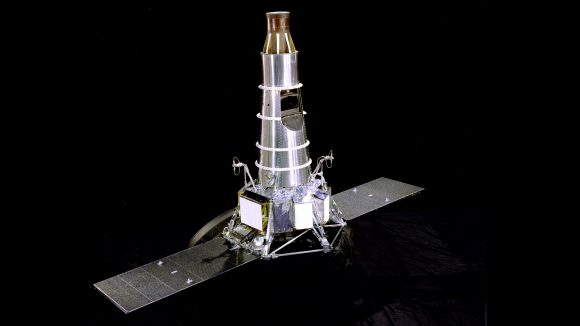
This was followed by the Ranger-8 lander, which impacted the surface of the Moon on Feb. 20th, 1965. The spacecraft took 7,000 high-resolution images of the Moon before crashing onto the surface, just 24 km from the Sea of Tranquility, which NASA had been surveying for the sake of their future Apollo missions. These images, which yielded details about the local terrain, helped to pave the way for crewed missions.
The first spacecraft to make a soft landing on the Moon was the Soviet Luna-9 mission, on February 3rd, 1966. This was accomplished through the use of an airbag system that allowed the probe to survive hitting the surface at a speed of 50 km/hour. It also became the first spacecraft to transmit photographic data back to Earth from the surface of another celestial body.
The first truly soft landing was made by the US with the Surveyor-1 spacecraft, which touched down on the surface of the Moon on June 2nd, 1966. After landing in the Ocean of Storms, the probe transmitted data back to Earth that would also prove useful for the eventual Apollo missions.
Several more Surveyor missions and one more Luna mission landed on the Moon before crewed mission began, as part of NASA’s Apollo program.
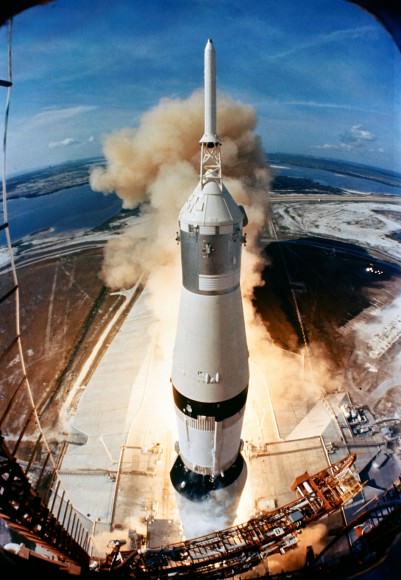
Crewed Missions:
The first crewed landing on the Moon was none other than the historic Apollo-11 mission, which touched down on the lunar surface on July 20th, 1969. After achieving orbit around the Moon in their Command Module (aka. the Columbia module), Neil Armstrong and Buzz Aldrin rode the Lunar Excursion (Eagle) Module down to the surface of the Moon.
Once they had landed, Armstrong radioed to Mission Control and announced their arrival by saying: “Houston, Tranquility Base here. The Eagle has landed.” Once the crew had gone through their checklist and depressurized the cabin, the Eagles’ hatch was opened and Armstrong began walking down the ladder to the Lunar surface first.
When he reached the bottom of the ladder, Armstrong said: “I’m going to step off the LEM now” (referring to the Lunar Excursion Module). He then turned and set his left boot on the surface of the Moon at 2:56 UTC July 21st, 1969, and spoke the famous words “That’s one small step for [a] man, one giant leap for mankind.”
About 20 minutes after the first step, Aldrin joined Armstrong on the surface and became the second human to set foot on the Moon. The two then unveiled a plaque commemorating their flight, set up the Early Apollo Scientific Experiment Package, and planted the flag of the United States before blasting off in the Lunar Module.
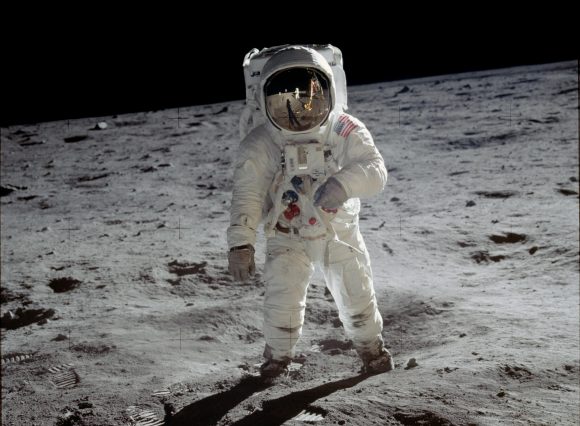
Several more Apollo missions followed which expanded on the accomplishments of the Apollo-11 crew. The US and NASA would remain the only nation and space agency to successfully land astronauts on the Moon, an accomplishment that has not been matched to this day.
Today, multiple space agencies (and even private companies) are contemplating returning to the Moon. Between NASA, the European Space Agency (ESA), the Russian Space Agency (Roscosmos), and the Chinese National Space Administration (CNSA), there are several plans for crewed missions, and even the construction of permanent bases on the Moon.
We have written many great articles about the Moon here at Universe Today. Here’s Who Were the First Men on the Moon?, How Many People Have Walked on the Moon?, How Do We Know the Moon Landing Isn’t Fake?, Where Were You When Apollo 11 Landed on the Moon?, What Does The Apollo 11 Moon Landing Site Look Like Today?
Want more information about the Moon? Here’s NASA’s Lunar and Planetary Science page. And here’s NASA’s Solar System Exploration Guide.
You can listen to a very interesting podcast about the formation of the Moon from Astronomy Cast, Episode 17: Where Did the Moon Come From?
Sources:
How Many Dogs Have Been to Space?
Becoming an astronaut is a rare honor. The rigorous selection process, the hard training, and then… the privilege of going into space! It is something few human beings will ever be privileged enough to experience. But what about other species of animal that have gone into space? Are we not being just the slightest bit anthropocentric in singling out humans for praise?
What about all those brave simians and mice that were sent into space? What about the guinea pigs and rats? And what of “Man’s Best Friend”, the brave canines that helped pave the way for “manned” spaceflight? During the 1950s and 60s, the Soviets sent over 20 dogs into space, some of which never returned. Here’s what we know about these intrepid canines who helped make humanity a space-faring race!
Background:
During the 1950s and 60s, the Soviets and Americans found themselves locked in the Space Race. It was a time of intense competition as both superpowers attempted to outmaneuver the other and become the first to achieve spaceflight, conduct crewed missions to orbit, and eventually land crews on another celestial body (i.e. the Moon).
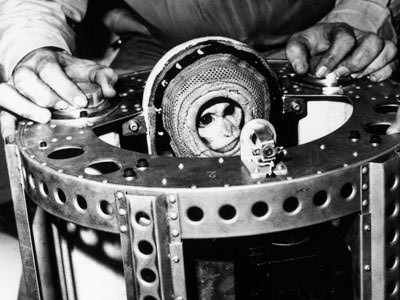
Before crewed missions could be sent, however, both the Soviet space program and NASA conducted rigorous tests involving animal test subjects, as a way of gauging the stresses and physical tolls going into space would have. These tests were not without precedent, as animals had been used for aeronautical tests in previous centuries.
For instance, in 1783, the Montgolfier brothers sent a sheep, a duck and a rooster when testing their hot air balloon to see what the effects would be. Between 1947-1960, the US launched several captured German V-2 rockets (which contained animal test subjects) to measure the effect traveling to extremely high altitudes would have on living organisms.
Because of the shortage of rockets, they also employed high-altitude balloons. These tests were conducted using fruit flies, mice, hamsters, guinea pigs, cats, dogs, frogs, goldfish and monkeys. The most famous test case was Albert II, a rhesus monkey that became the first monkey to go into space on June 14th, 1949.
For the Soviets, it was felt that dogs would be the perfect test subjects, and for several reasons. For one, it was believed that dogs would be more comfortable with prolonged periods of inactivity. The Soviets also selected female dogs (due to their better temperament) and insisted on stray dogs (rather than house dogs) because they felt they would be able to tolerate the extreme stresses of space flight better.
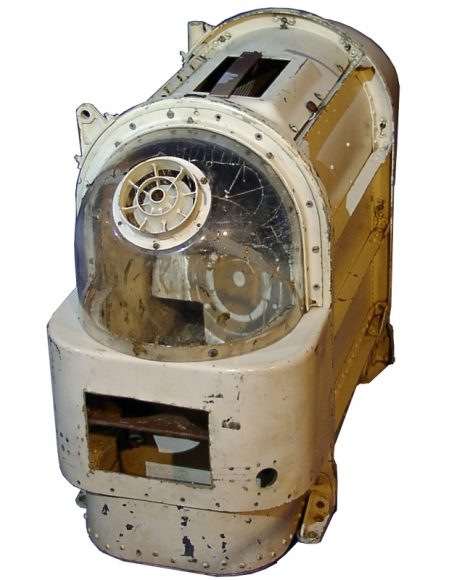
Training:
For the sake of preparing the dogs that were used for the sake of test flights, the Soviets confined the subjects in small boxes of decreasing size for periods of between 15 and 20 days at a time. This was designed to simulate spending time inside the small safety modules that would housed them for the duration of their flights.
Other exercises designed to get the dogs prepared for space flight included having them stand still for long periods of time. They also sought to get the dogs accustomed to wearing space suits, and made them ride in centrifuges that simulated the high acceleration experienced during launch.
Suborbital Flights:
Between 1951 and 1956, the Russians conducted their first test flights using dogs. Using R-1 rockets. a total of 15 missions were flown and were all suborbital in nature, reaching altitudes of around 100 km (60 mi) above sea level. The dogs that flew in these missions wore pressure suits with acrylic glass bubble helmets.
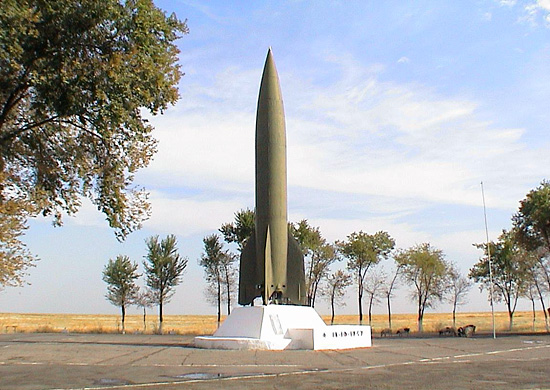
The first to go up were Dezik and Tsygan, who both launched aboard an R-1 rocket on July 22nd, 1951. The mission flew to a maximum altitude of 110 km, and both dogs were recovered unharmed afterwards. Dezik made another sub-orbital flight on July 29th, 1951, with a dog named Lisa, although neither survived because their capsule’s parachute failed to deploy on re-entry.
Several more launches took place throughout the Summer and Fall of 1951, which included the successful launch and recovery of space dogs Malyshka and ZIB. In both cases, these dogs were substitutes for the original space dogs – Smelaya and Bolik – who ran away just before the were scheduled to launch.
By 1954, space dogs Lisa-2 (“Fox” or “Vixen”, the second dog to bear this name after the first died), Ryzhik (“Ginger” because of the color of her fur) made their debut. Their mission flew to an altitude of 100 km on June 2nd, 1954, and both dogs were recovered safely. The following year, Albina and Tsyganka (“Gypsy girl”) were both ejected out of their capsule at an altitude of 85 km and landed safely.
Between 1957 to 1960, 11 flights with dogs were made using the R-2A series of rockets, which flew to altitudes of about 200 km (124 mi). Three flights were made to an altitude of about 450 km (280 mi) using R-5A rockets in 1958. In the R-2 and R-5 rockets, the dogs were contained in a pressured cabin

Those to take part in these launches included Otvazhnaya (“Brave One”) who made a flight on July 2nd, 1959, along with a rabbit named Marfusha (“Little Martha”) and another dog named Snezhinka (“Snowflake”). Otvazhnaya would go to make 5 other flights between 1959 and 1960.
Orbital Flights:
By the late 1950s, and as part of the Sputnik and Vostok programs, Russian dogs began to be sent into orbit around Earth aboard R-7 rockets. On November 3rd, 1957, the famous space dog Laika became the first animal to go into orbit as part of the Sputnik-2 mission. The mission ended tragically, with Laika dying in flight. But unlike other missions where dogs were sent into suborbit, her death was anticipated in advance.
It was believed Laika would survive for a full ten days, when in fact, she died between five and seven hours into the flight. At the time, the Soviet Union claimed she died painlessly while in orbit due to her oxygen supply running out. More recent evidence however, suggests that she died as a result of overheating and panic.
This was due to a series of technical problems which resulted from a botched deployment. The first was the damage that was done to the thermal system during separation, the second was some of the satellite’s thermal insulation being torn loose. As a result of these two mishaps, temperatures in the cabin reached over 40º C.

The mission lasted 162 days before the orbit finally decayed and it fell back to Earth. Her sacrifice has been honored by many countries through a series of commemorative stamps, and she was honored as a “hero of the Soviet Union”. Much was learned from her mission about the behavior of organisms during space flight, though it has been argued that what was learned did not justify the sacrifice.
The next dogs to go into space were Belka (“Squirrel”) and Strelka (“Little Arrow”), which took place on Aug. 19th, 1960, as part of the Sputnik-5 mission. The two dogs were accompanied by a grey rabbit, 42 mice, 2 rats, flies, and several plants and fungi, and all spent a day in orbit before returning safely to Earth.
Strelka went on to have six puppies, one of which was named Pushinka (“Fluffy”). This pup was presented to President John F. Kennedy’s daughter (Caroline) by Nikita Khrushchev in 1961 as a gift. Pushinka went on to have puppies with the Kennedy’s dog (named Charlie), the descendants of which are still alive today.
On Dec. 1st, 1960, space dogs Pchyolka (“Little Bee”) and Mushka (“Little Fly”) went into space as part of Sputnik-6. The dogs, along with another compliment of various test animals, plants and insects, spent a day in orbit. Unfortunately, all died when the craft’s retrorockets experienced an error during reentry, and the craft had to be intentionally destroyed.
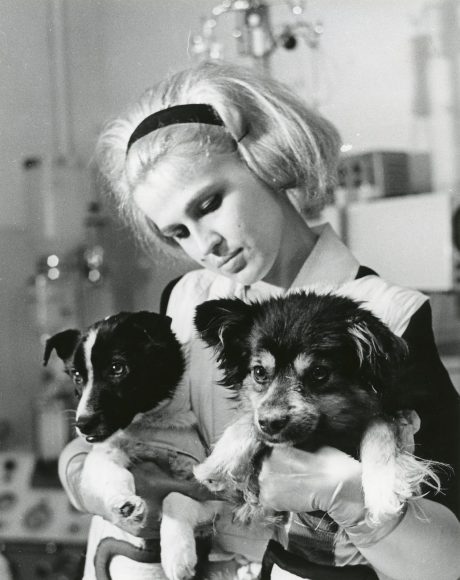
Sputnik 9, which launched on March 9th, 1961, was crewed by spacedog Chernenko (“Blackie”) – as well as a cosmonaut dummy, mice and a guinea pig. The capsule made one orbit before returning to Earth and making a soft landing using a parachute. Chernenko was safely recovered from the capsule.
On March 25th, 1961, the dog Zvyozdocha (“Starlet”) who was named by Yuri Gagarin, made one orbit on board the Sputnik-10 mission with a cosmonaut dummy. This practice flight took place a day before Gagarin’s historic flight on April 12th, 1961, in which he became the first man to go into space. After re-entry, Zvezdochka safely landed and was recovered.
Spacedogs Veterok (“Light Breeze”) and Ugolyok (“Coal”) were launched on board a Voskhod space capsule on Feb. 22nd, 1966, as part of Cosmos 110. This mission, which spent 22 days in orbit before safely landing on March 16th, set the record for longest-duration spaceflight by dogs, and would not be broken by humans until 1971.
Legacy:
To this day, the dogs that took part in the Soviet space and cosmonaut training program as seen as heroes in Russia. Many of them, Laika in particular, were put on commemorative stamps that enjoyed circulation in Russia and in many Eastern Bloc countries. There are also monuments to the space dogs in Russia.
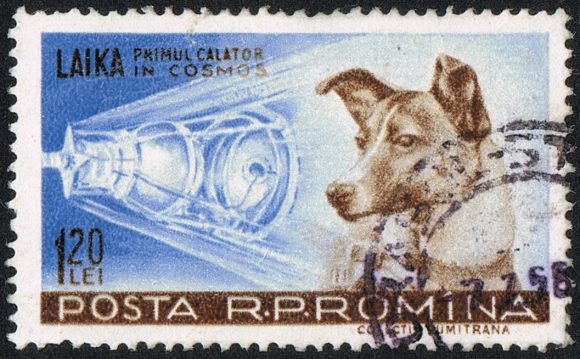
These include the statue that exists outside of Star City, the Cosmonaut training facility in Moscow. Created in 1997, the monument shows Laika positioned behind a statue of a cosmonaut with her ears erect. The Monument to the Conquerors of Space, which was constructed in Moscow in 1964, includes a bas-relief of Laika along with representations of all those who contributed to the Soviet space program.
On April 11, 2008, at the military research facility in Moscow where Laika was prepped for her mission to space, officials unveiled a monument of her poised inside the fuselage of a space rocket (shown at top). Because of her sacrifice, all future missions involving dogs and other test animals were designed to be recoverable.
Four other dogs died in Soviet space missions, including Bars and Lisichka (who were killed when their R-7 rocket exploded shortly after launch). On July 28, 1960, Pchyolka and Mushka also died when their space capsule was purposely destroyed after a failed re-entry to prevent foreign powers from inspecting the capsule.
However, their sacrifice helped to advance safety procedures and abort procedures that would be used for many decades to come in human spaceflight.
We have written many interesting articles about animals and space flight here at Universe Today. Here’s Who was the First Dog to go Into Space?, What was the First Animal to go into Space?, What Animals Have been to Space?, Who was “Space Dog” Laika?, and Russian Memorial for Space Dog Laika.
For more information, check out Russian dogs lost in space and NASA’s page about the history of animals in space.
Astronomy Cast has an episode on space capsules.
Sources:
Time for Earth to bid China’s Yutu Moon Rover Farewell ?
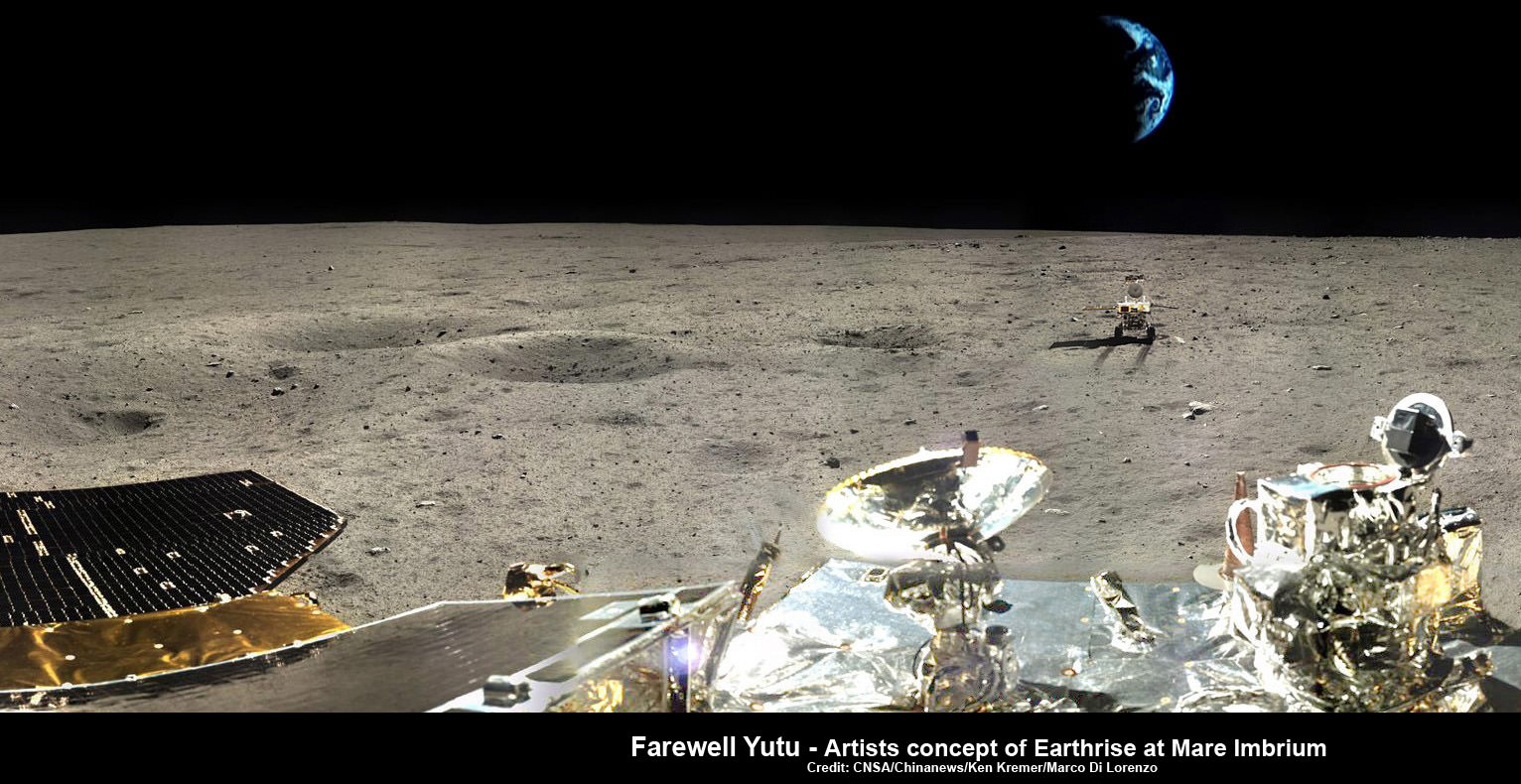
Farewell Yutu – artistic impression of Earthrise over Yutu at lunar landing site. This composite timelapse photomosaic combines farewell view of China’s Yutu rover with Moon’s surface terrain at Mare Imbrium landing site and enlarged photo of Earth – all actual images taken by Chang’e-3 lander. Not a science image. Credit: CNSA/Chinanews/Ken Kremer/Marco Di Lorenzo – kenkremer.com
See complete Yutu timelapse panorama below and at NASA APOD Feb. 3, 2014:http://apod.nasa.gov/apod/ap140203.html
Story and Headline revised and updated[/caption]
Update: There might yet be hope for Yutu. Amateur radio operators at UHF-satcom reported detection of a signal from Yutu today. But no update has been reported on the China News Service website or other official state media. Yutu’s fate is unknown.]
Update 2: Yutu is alive. story and headline revised. Further details – here
………..
For a time, it seemed China’s maiden moon rover ‘Yutu’, beloved by millions worldwide, had been lost.
The apparently unfortunate and sad breaking news was just reported today in an ultra brief dispatch by the English language version of Chinadaily – with the headline “Loss of lunar rover.”
But the death notice by Chinese officials turned out to be premature when a signal was detected a day later.
It had been thought that Yutu froze to death due to a pre-hibernation mechanical malfunction and failed to wake up and communicate with China’s mission controllers in Beijing on Monday, Feb. 10, when daylight returned to the rovers Moon landing site at Mare Imbrium (Sea of Rains) at the start of what would have been Lunar Day 3 for the mission.
“China’s first lunar rover, Yutu, could not be restored to full function on Monday [Feb. 10] as expected,” wrote the state owned Chinadaily.com, China News Service agency.
The cause of the pre-hibernation malfunction may perhaps be traced back to a buildup of abrasive lunar dust, but no one knows at this time.
Note: This story has been updated as further details emerged.
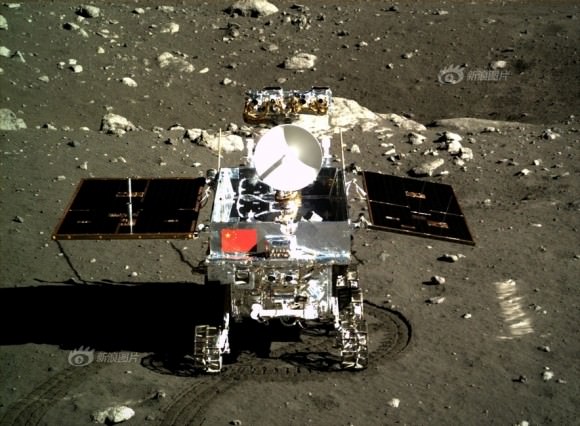
Yutu has touched the hearts of countless Earthlings since the history making landing on the desolate gray plains of the the Moon atop the Chang’e-3 lander two month ago on Dec. 14, 2013.
See our timelapse mosaic, artistic impression of Earthrise over Yutu – above – by the image processing team of Ken Kremer and Marco Di Lorenzo.
It combines real images of the Moon’s surface terrain with an intentionally enlarged photo of Earth – all snapped by the Chang’e-3 lander – as a homage to the mission.
See the complete timelapse mosaic herein and featured at NASA APOD on Feb 3, 2013.
Although definitive word about the Chang’e-3 lander has not yet been announced, it is expected to survive and has a 1 year design lifetime.
Potentially bad news about Yutu’s fate was not unexpected however, after Chinese space officials disclosed that the rover “experienced a mechanical control abnormality” two weeks ago, just as her 2nd lunar night was to begin, according to a report by China’s official government newspaper, The People’s Daily.
“Yutu experienced mechanical problems on Jan 25 and has been unable to function since then,” according to Chinadaily.com, China News service.

This 360-degree time-lapse color panorama from China’s Chang’e-3 lander shows the Yutu rover at three different positions during its trek over the Moon’s surface at its landing site from Dec. 15-22, 2013 during the 1st Lunar Day.
Credit: CNSA/Chinanews/Ken Kremer/Marco Di Lorenzo – kenkremer.com
See our Yutu timelapse pano also at NASA APOD Feb. 3, 2014:
http://apod.nasa.gov/apod/ap140203.html
Each lunar day and night lasts for alternating periods of 14 Earth days.
The six wheeled Yutu rover and Chang’e-3 mothership lander had just finished sleeping through the terribly frigid two week long lunar night since they entered their second hibernation period on Jan. 24th and 25th respectively, and Chinese space engineers had hoped to reawaken both probes in the past few days.
No communications are possible during the period of nighttime dormancy.
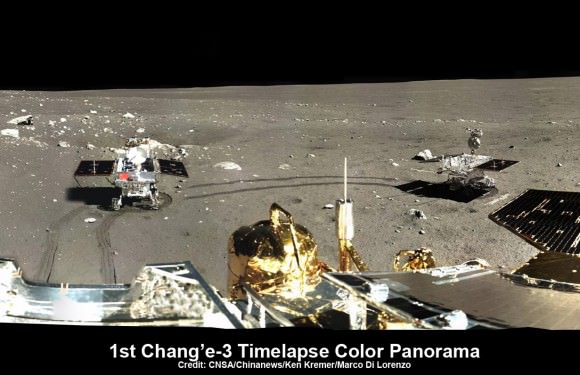
Yutu, which translates as ‘Jade Rabbit’ is named after the rabbit in Chinese mythology that lives on the Moon as a pet of the Moon goddess Chang’e.
The piggybacked pair of Chinese probes safely touched down on the Moon at Mare Imbrium near the Bay of Rainbows on Dec. 14, 2013.
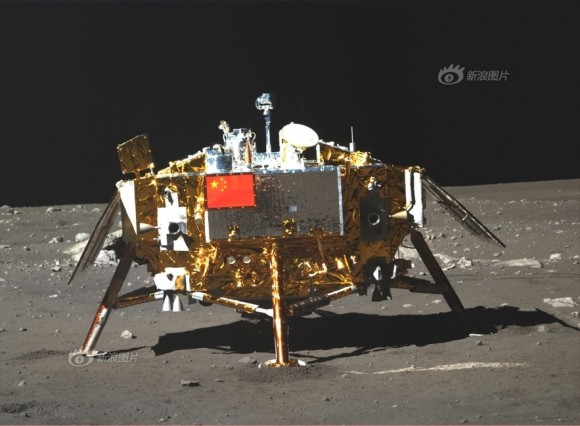
Apparently one of Yutu’s solar panels did not fold back properly over the instrument laden mast after it was lowered to a horizontal position into a warmed electronics box where it is shielded and insulated from the extremely frigid lunar night time temperatures.
Dust accumulation on the rover and gears may possibly be to blame for the failure to retract, based on unofficial accounts.
China has not released any official or detailed information on the cause of the malfunction or recovery actions taken by Chinese space engineers.
Such a malfunction could spell doom for the fragile electronic and computer components in the unprotected mast mounted instruments and systems, including the color and navigation cameras and the high gain antenna.
During each 14 Earth-day long night, the Moon’s temperatures plunge dramatically to below minus 180 Celsius, or minus 292 degrees Fahrenheit.
‘Jade Rabbit’ had departed the landing site forever, and was journeying southwards as the incident occurred – about six weeks into its planned 3 month long moon roving expedition to investigate the moon’s surface composition and natural resources.
The 140 kg Yutu robot drove off a pair of ramps and onto the moon seven hours after the Dec. 14, 2013 touchdown.
The 1200 kg stationary lander is expected to return science data about the Moon and telescopic observations of the Earth and celestial objects for at least one year.
Chang’e-3 and Yutu landed on a thick deposit of volcanic material.
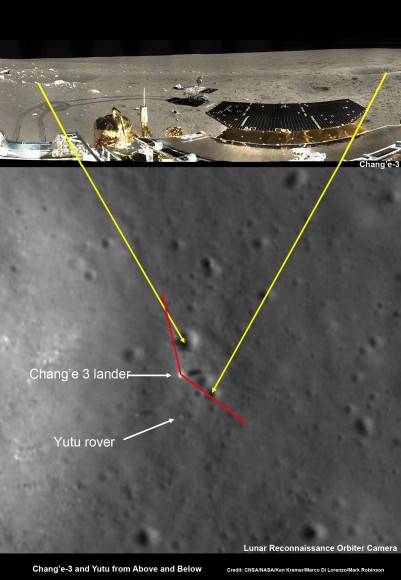
Composite view shows China’s Chang’e-3 lander and Yutu rover from Above And Below (orbit and surface) – lander color panorama (top) and orbital view from NASA’s LRO orbiter (bottom). Chang’e-3 lander color panorama shows Yutu rover after it drove down the ramp to the moon’s surface and began driving around the landers right side to the south. Yellow lines connect craters seen in the lander panorama and the LROC image from LRO (taken at a later date after the rover had moved), red lines indicate approximate field of view of the lander panorama. Credit: CNSA/NASA/Ken Kremer/Marco Di Lorenzo/Mark Robinson
They were designed to conduct their science investigations and work independently of one another.
China can be proud of its magnificent space flight accomplishment.
Chang’e-3 was the first spacecraft from Earth to soft land on the Moon in nearly four decades since the touchdown of the Soviet Union’s Luna 24 sample return spacecraft back in 1976.
America’s last visit to the Moon’s surface occurred with the manned Apollo 17 landing mission – crewed by astronauts Gene Cernan and Harrison ‘Jack’ Schmitt , who coincidentally ascended from the lunar soil on Dec. 14, 1972 – exactly 41 years before Chang’e-3.
China’s follow on Chang’e-4 Moon lander is due to blastoff in 2015.
Surely the science and engineering team will incorporate valuable lessons learned.
China is only the 3rd country in the world to successfully soft land a spacecraft on Earth’s nearest neighbor after the United States and the Soviet Union.
Stay tuned here for Ken’s continuing Chang’e-3, Orion, Orbital Sciences, SpaceX, commercial space, LADEE, Mars and more planetary and human spaceflight news.
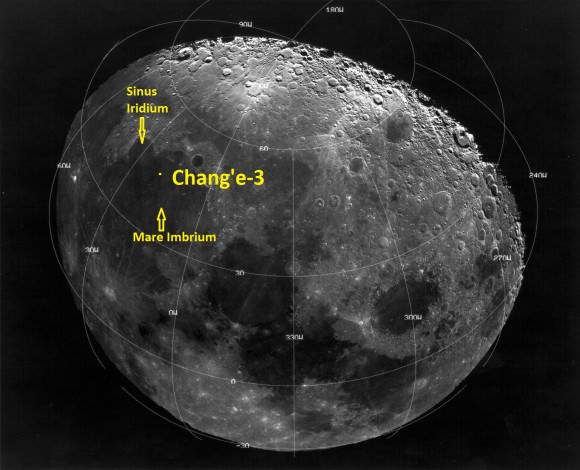
Cosmonaut Valentina Tereshkova; 1st Woman in Space 50 Years Ago! Ready for Mars

50 Years ago today, Soviet Cosmonaut Valentina Tereshkova made history and became the first woman ever fly in space, when she launched aboard the Vostok-6 capsule on June 16, 1963.
The then 26 year old Tereshkova blasted off from the Baikonur Cosmodrome – following in the historic footsteps of Cosmonaut Yuri Gagarin, the first human to fly in space for a single orbit in 1961.
Her mission was far longer, lasting nearly 3 days (70 hours 50 minutes) for a total of 48 orbits of Earth at altitudes ranging from 180 to 230 kilometers (110 x 144 mi). She conducted biomedical & science experiments to learn about the effects of space on the human body, took photographs that helped identify aerosols in the atmosphere and manually piloted the ship.
“Hey, sky! Take off your hat, I’m coming!” she said in the seconds prior to liftoff.
Vostok-6 was her only space mission.

But today at age 76, Tereshkova is ready to forget retirement and sign up for a truly grand space adventure – a trip to Mars.
“I am ready [to go to Mars],” she said in remarks on the occasion of the 50th anniversary of her June 16, 1963 blastoff, according to Roscosmos, the Russian Federal Space Agency. Apparently Mars is her favorite planet!
“Of course, it’s a dream to go to Mars and find out whether there was life there or not,” Tereshkova said. “If there was, then why did it die out? What sort of catastrophe happened?”

Tereshkova’s landmark flight on Vostok-6 was made ever more historic in that it was actually a joint space mission with Vostok-5; which blasted off barely two days earlier on June 14 with fellow Soviet cosmonaut Valery Bykovsky.
Vostok-5 and Vostok-6 flew within 5 kilometers (3 miles) of one other at one point. They spoke to each other by radio as well as with the legendary Soviet Premier Nikita Krushchev. Her call sign was “Seagull”. Bykovsky’s call sign was “Hawk”.
Sergei Korolyov, the father of the Soviet space program, called her “my little seagull.”
Korolev wanted to launch a woman to space to score another spectacular first for the Soviet Union at the height of the Cold War with the United States.
So she had been selected as a member of the cosmonaut corps just a year earlier in March 1962 along with four other female candidates. Teseshkova was the only member of that female group ever to achieve orbit.
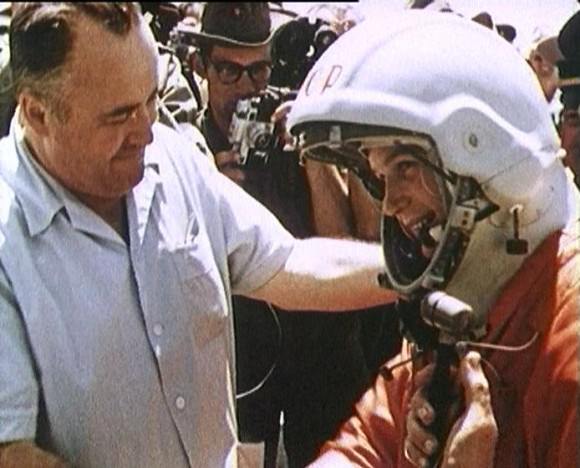
Tereshkova, a textile factory worker, was chosen in part because she was an expert parachute jumper – a key requirement at that time since the Vostok capsule itself could not land safely. So the cosmonauts had to eject in the last moments of the descent from orbit at about 7,000 m (23,000 ft) and descend separately via parachute.
It would take nearly two decades before another woman – also Soviet- would fly to space; Svetlana Savitskaya in 1982.
The first American female space flyer – Sally Ride – finally reached orbit a year later in 1983 aboard the Space Shuttle.
To date, woman comprise about 10% of the people who have flown to space-57 out of 534.
Today, June 16, there are two women orbiting Earth out of 9 humans total – NASA Astronaut Karen Nyberg aboard the International Space Station and Chinese astronaut Wang Yaping aboard Shenzhou 10.
Vostok-6 was the last of the Vostok spacecraft series.
Bykovsky flew a total of 5 days and 82 orbits. He landed 3 hours after Tereshkova on June 19.
Tereshkova became an instant heroine upon landing, a ‘Hero of the Soviet Union’ and will forever be known as the ‘First Lady of Space.’
On June 14, Russian Television aired a special 50th anniversary program celebrating the flights of Vostok-5 and Vostok-6 – “Valentina Tereshkova – Seagull and the Hawk”
And don’t forget to “Send Your Name to Mars” aboard NASA’s MAVEN orbiter- details here. Deadline: July 1, 2013
…………….
Learn more about Mars, Curiosity, Opportunity, MAVEN, LADEE and NASA missions at Ken’s upcoming lecture presentations
June 23: “Send your Name to Mars on MAVEN” and “CIBER Astro Sat, LADEE Lunar & Antares Rocket Launches from Virginia”; Rodeway Inn, Chincoteague, VA, 8 PM
Opportunity Mars Rover Blazes Past 40 Year Old Space Driving Record
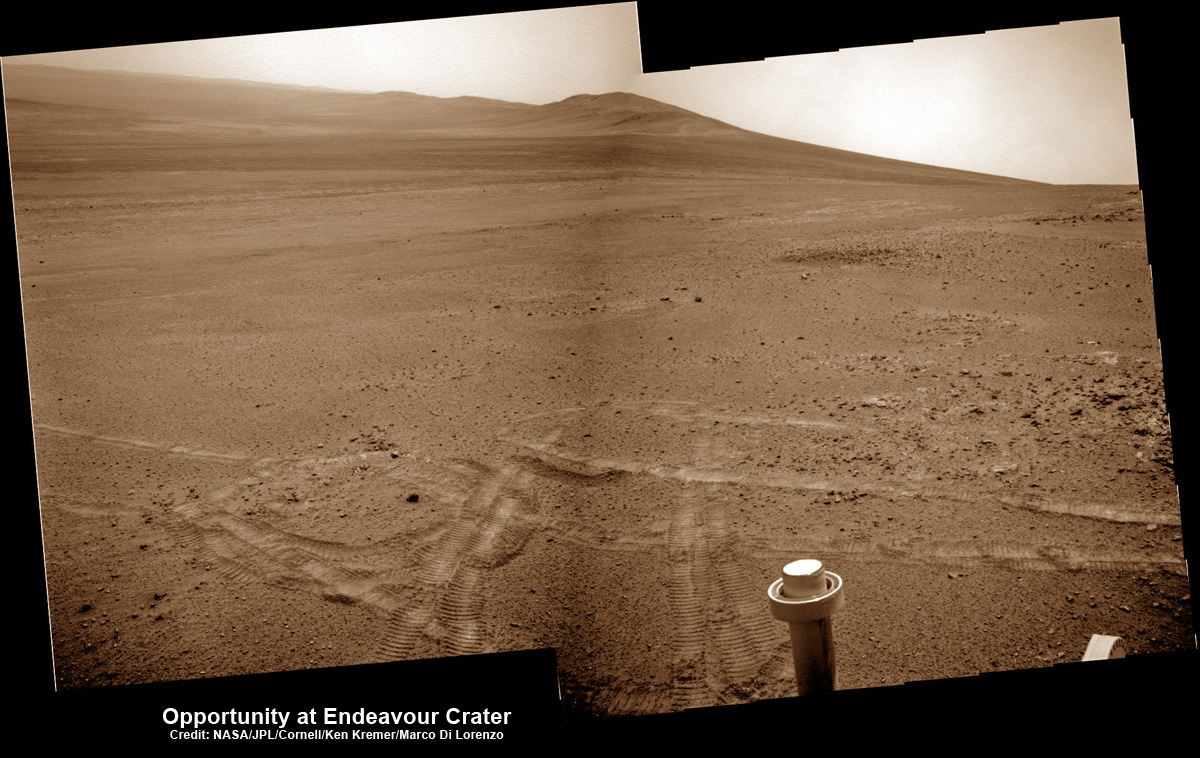
Now more than 9 years and counting into her planned mere 90 day mission to Mars, NASA’s legendary Opportunity rover has smashed past another space milestone and established a new distance driving record for an American vehicle on another world this week.
On Thursday, May 16, the long-lived Opportunity drove another 263 feet (80 meters) on Mars – bringing her total odometry since landing on 24 January 2004 to 22.220 miles (35.760 kilometers) – and broke through the 40 year old driving record set back in December 1972 by Apollo 17 astronauts Eugene Cernan and Harrison Schmitt.
See below our complete map of the 9 Year Journey of Opportunity on Mars.
Cernan and Schmitt visited Earth’s moon on America’s final lunar landing mission and drove their mission’s Lunar Roving Vehicle (LRV-3) 22.210 miles (35.744 kilometers) over the course of three days on the moon’s surface at Taurus-Littrow.
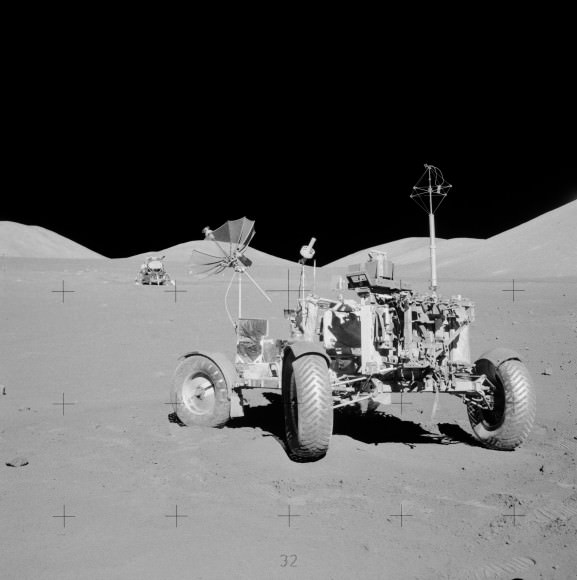
Cernan was ecstatic at the prospect of the Apollo 17 record finally being surpassed.
“The record we established with a roving vehicle was made to be broken, and I’m excited and proud to be able to pass the torch to Opportunity, ” said Cernan to team member Jim Rice of NASA Goddard Space Flight Center, Greenbelt, Md, in a NASA statement.
And Opportunity still has plenty of juice left!
So, although there are no guarantees, one can reasonably expect the phenomenal Opportunity robot to easily eclipse the ‘Solar System World Record’ for driving distance on another world that is currently held by the Soviet Union’s remote-controlled Lunokhod 2 rover. See detailed graphic below.
In 1973, Lunokhod 2 traveled 23 miles (37 kilometers) on the surface of Earth’s nearest neighbor.
Why could Opportunity continue farther into record setting territory ?
Because Opportunity’s handlers back on Earth have dispatched the Martian robot on an epic trek to continue blazing a path forward around the eroded rim of the huge crater named ‘Endeavour’ – where she has been conducting ground breaking science since arriving at the “Cape York” rim segment in mid 2011.
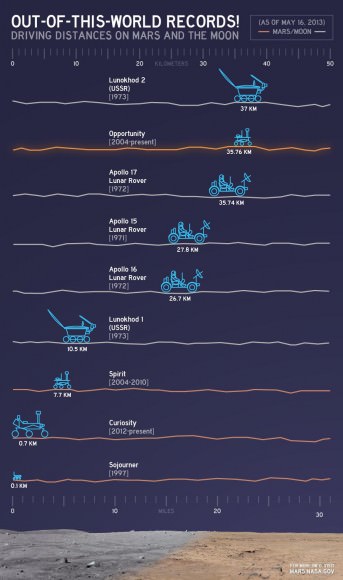
Opportunity has just now set sail for her next crater rim destination named “Solander Point”, an area about 1.4 miles (2.2 kilometers) away – due south from “Cape York.”
Endeavour Crater is 14 miles (22 km) wide, featuring terrain with older rocks than previously inspected and unlike anything studied before. It’s a place no one ever dared dream of reaching prior to Opportunity’s launch in the summer of 2003 and landing on the Meridiani Planum region in 2004.
Opportunity will blast through the world record milestone held by the Lunokhod 2 rover somewhere along the path to “Solander Point.”
Thereafter Opportunity will rack up ever more miles as the rover continues driving further south to a spot called “Cape Tribulation”, that is believed to hold caches of clay minerals that formed eons ego when liquid water flowed across this region of the Red Planet.
It’s a miracle that Opportunity has lasted so far beyond her design lifetime – 37 times longer than the 3 month “warranty.”
“Regarding achieving nine years, I never thought we’d achieve nine months!” Principal Investigator Prof. Steve Squyres of Cornell University told me recently on the occasion of the rovers 9th anniversary on Mars in January 2013.
“Our next destination will be Solander Point,” said Squyres.
Opportunity was joined on Mars by her younger sister Curiosity, currently exploring the crater floor inside Gale Crater since landing on Aug. 6, 2012.
Curiosity is likewise embarked on a epic trek – towards 3 mile high (5.5 km) Mount Sharp some 6 miles away.
Both rovers Opportunity & Curiosity have discovered phyllosilicates, hydrated calcium sulfate mineral veins and vast evidence for flowing liquid water on Mars. All this data enhances the prospects that Mars could have once supported microbial life forms.
The Quest for Life beyond Earth continues ably with NASA’s Martian sister rovers.
And don’t forget to “Send Your Name to Mars” aboard NASA’s MAVEN orbiter- details here. Deadline: July 1, 2013
…………….
Learn more about NASA missions, Opportunity, Curiosity and more at Ken’s upcoming lecture presentation:
June 12: “Send your Name to Mars” and “Antares Rocket Launch from Virginia”; Franklin Institute and Rittenhouse Astronomical Society, Philadelphia, PA, 8 PM.
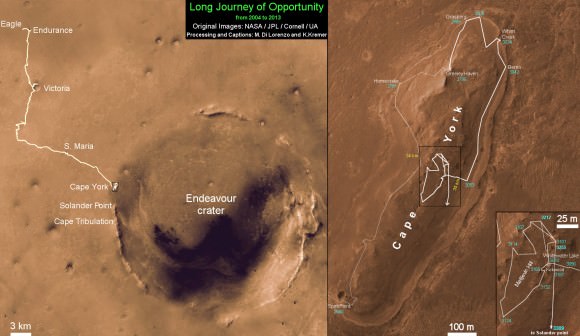
Credit: NASA/JPL/Cornell/ASU/Marco Di Lorenzo/Ken Kremer
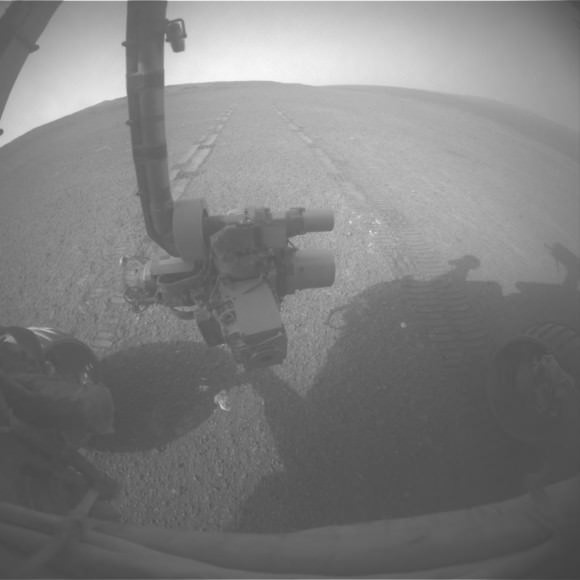
Stirring Video Tributes to Yuri Gagarin

Today, April 12, is the 50th Anniversary of Earth’s first manned spaceflight by Hero Cosmonaut , Yuri Gagarin of what was then the Soviet Union. He was strapped aboard the Vostok 1 spacecraft and blasted off to the High Froniter at 9:07 a.m. Moscow time from the Baikonur Cosmodrome
Roskosmos – the Russian Federal Space Agency – honors his memory with this stirring video tribute chronicling the Flight of Yuri Gagarin. The outstanding video is set to the song “Seed” with lyrics sung by the Russian Red Army Choir. Dramatic video clips show rare views of Gagarin in training, the actual launch day events and concludes with his grand reception.
Gagarin’s smile is infectious and the video brings him to life. Watch and enjoy – several times . And be prepared to journey back in time to the era of the Space Race and the Soviet Union.
Included below is another music video with more amazing videos clips from the Flight of Yuri Gagarin on April 12, 1961and a brief video summarizing his all too short life. Gagarin would have been celebrating his 75th birthday on March 9.
Today, people around the globe will celebrate the historic occasion at over 500 Yuri’s Night Events. You can still join in the fun and attend. Find out how at the Yuri Night Website. Or join Ken in Princeton Junction, New Jersey for a free talk about Yuri and another historic space milestone, the 30th Anniversary of the first shuttle flight: STS -1.
And be sure to watch the new film First Orbit, steaming online, which recreates the view that Gagarin would have seen.
Send Ken your “Yuri’s Night” event photos/report and any photos of Yuri Gagarin to publish at Universe Today. Email kremerken at yahoo dot com
Read more about Gagarin in my earlier stories:
Yuri Gagarin and Vostok 1 Photo Album – 50th Anniversary of Human Spaceflight
Countdown to Yuri’s Night and the 50th Anniversary of Human Spaceflight !
Roscosmos website
Yuri’s Night Website
Yuri’s Night Party list
Yuri’s Night Party with Ken in Princeton Junction, NJ, USA
First Orbit Website
STS-1 NASA Mission Website
Ken Kremer
[/caption]
Yuri Gagarin and Vostok 1 Photo Album – 50th Anniversary of Human Spaceflight
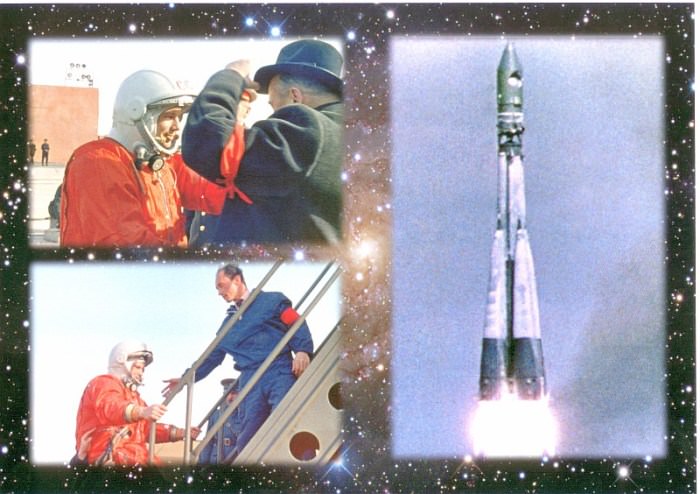
[/caption]
50 Years ago on April 12,1961 the era of Human spaceflight opened with a roar to the heavens above with the thunderous blastoff of Cosmonaut Yuri Gagarin aboard the Vostok 1 capsule from the Baikonur Cosmodrome Site No.1 at 9:07 a.m. Moscow time. Gagarin, at the age of 27, dared to brave the perils of the unknown and became the first human being to be strapped atop a rocket, ascend to outer space and view what no one else had ever seen, the entire Earth as a sphere. A bold and courageous test flight in every dimension. And the effects of weightlessness had only been tested on dogs – not people.
Herein is a picture album of significant launch day events, including three collages of rare photos of Yuri Gagarin climbing up the launch tower and boarding the Vostok 1 spacecraft for the historic liftoff of the first manned spaceflight on April 12, 1961.
Sergei Korolev, “Chief Designer” of the Soviet Space program radioed, “LIFT OFF! We wish you a good flight. Everything is all right.”

“I see Earth! It is so beautiful!” Gagarin said from orbit. “I see rivers. Visibility is good.”
Roscosmos, the Russian Federal Space Agency, put out a call for anyone interested in Yuri Gagarin and the birth of the human space exploration era to share their documents, photos and other information with the public – and the fabulous collages resulted from the response.
Do you have photos or memories of Gagarin ? Send them to Ken. Gagarin traveled widely as an ambassador of goodwill, bridging the dangerous ideological gulf between East and West during the height of the Cold War.
Gagarin’s flight lasted 108 minutes for a single orbit around the Earth. The mission was brought to a close with the de-orbit firing of the reentry rockets. Gagarin ejected from the capsule at 7 km altitude because the hard landing of the capsule was too dangerous for people. So he parachuted safely to the ground. April 12 has been celebrated as Cosmonautics Day in Russia every year since 1962. Vostok 1 was Gagarin’s only flight
Tragically, Gagarin’s life ended on March 27, 1968. He was flying a routine training mission in a MiG-15UTI fighter with flight instructor Vladimir Seryogin when the plane suddenly crashed near the town of Kirzhach. Gagarin was laid to rest in the wall of the Kremlin on Red Square.
In honor of this 50th anniversary of the dawn of Human spaceflight, a global network of over 444 Yuri’s Night parties are being staged worldwide on April 12, 2011 to celebrate one of the humankind’s greatest achievements – that’s double the number from 2010.
20 years after Gagarin’s flight, NASA’s first space shuttle blasted off on the STS-1 mission on April12, 1981.
You can join in the local Yuri’s Night festivities taking place in more than 70 countries from Afghanistan (visited by Gagarin in Dec. 1961) to Vietnam. Or join Ken in Princeton Junction, New Jersey for a free presentation about Gagarin’s flight and my behind the scenes look at the space shuttle and beyond.
Send Ken your “Yuri’s Night” event photos/report and any photos of Yuri Gagarin to publish at Universe Today. Email kremerken at yahoo dot com
Read Ken’s other stories about Yuri Gagarin and Yuri’s Night:
Countdown to Yuri’s Night and the 50th Anniversary of Human Spaceflight !
Stirring Video Tributes to Yuri Gagarin
Roscosmos website
Yuri’s Night Website
Yuri’s Night Party list
Yuri’s Night Party with Ken in Princeton Junction, NJ, USA
First Orbit Website
STS-1 NASA Mission Website
Ken Kremer
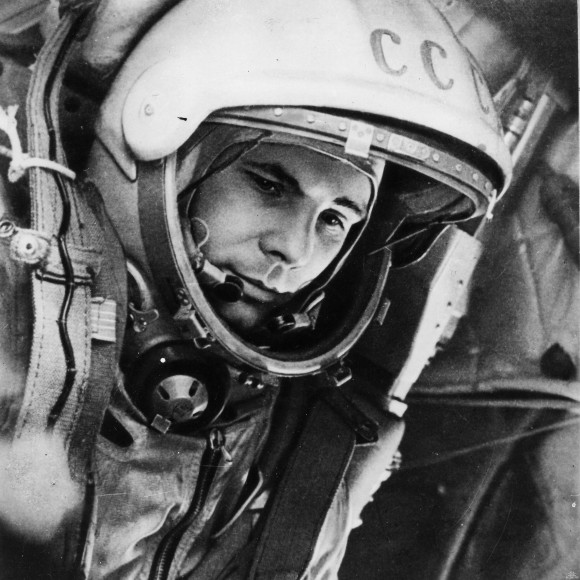
On 12 April 1961, Yuri Gagarin became the first human to travel into space, launched into orbit on the Vostok 3KA-3 spacecraft (Vostok 1). Credits: alldayru.com
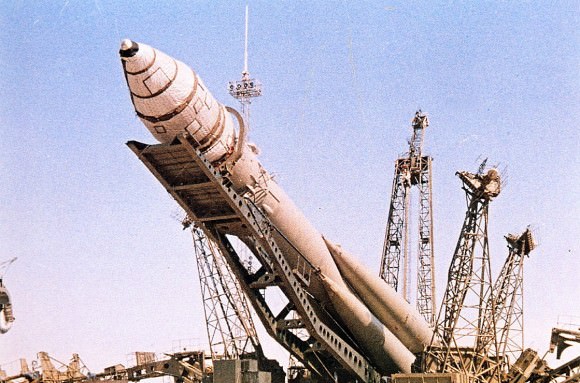
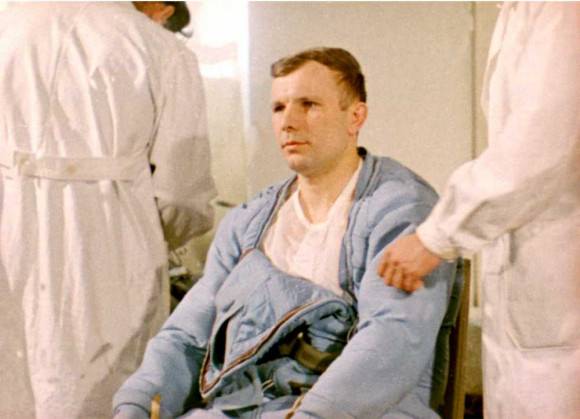
Yuri Gagarin seen dressing in a heating/cooling garment worn under his orange pressure suit. On 12 April 1961, Gagarin became the first human to travel into space, launched into orbit on the Vostok 3KA-3 spacecraft (Vostok 1). Credits: alldayru.com
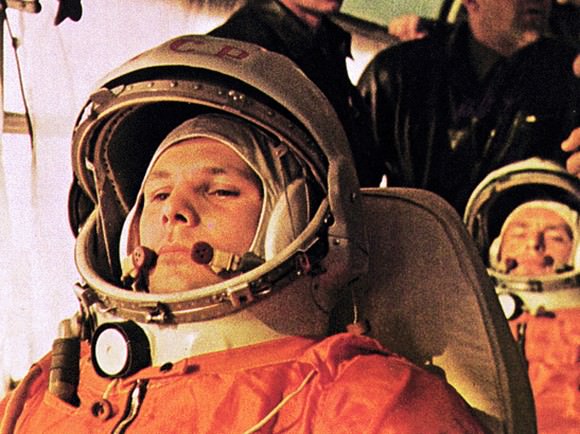
Yuri Gagarin on the bus on the way to the launch pad with cosmonaut German Titov behind him. Titov was the back-up pilot who later became pilot of Vostok 2. Credit: NASA
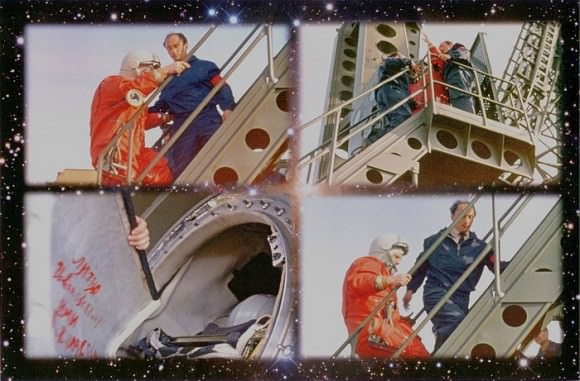
Collage of rare photos of Cosmonaut Yuri Gagarin boarding Vostok 1 spacecraft and historic launch of first manned spaceflight on April 12, 1961 from Baikonur Cosmodrome Site No.1 at 9:07 a.m. Moscow time (607 UTC), Soviet Union. Gagarin is greeted by Oleg Ivanvosky who now works in the museum of Lavochkin R&D. Credits: Oleg Ivanvosky/ Evgeny A. Sivukhin/Lavochkin R&D/Roscosmos
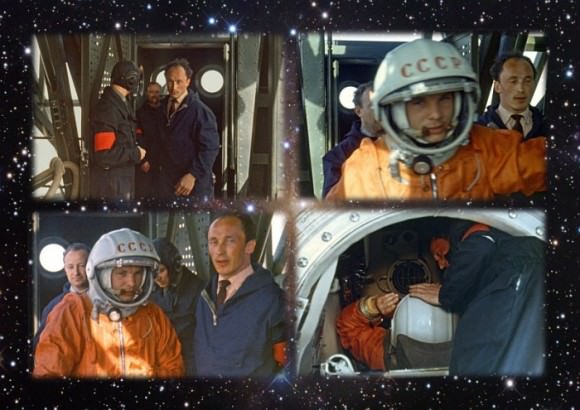
Collage of rare photos of Cosmonaut Yuri Gagarin boarding Vostok 1 spacecraft and historic launch of first manned spaceflight on April 12, 1961 from Baikonur Cosmodrome Site No.1 at 9:07 a.m. Moscow time (607 UTC), Soviet Union. Gagarin is greeted by Oleg Ivanvosky who now works in the museum of Lavochkin R&D. Credits: Oleg Ivanvosky/ Evgeny A. Sivukhin/Lavochkin R&D/Roscosmos

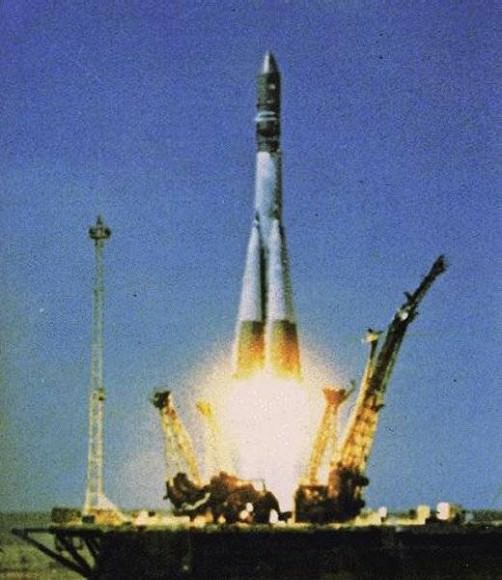
Cosmonaut Yuri Gagarin became the first human to journey into outer space by launching to orbit aboard Vostok 1.
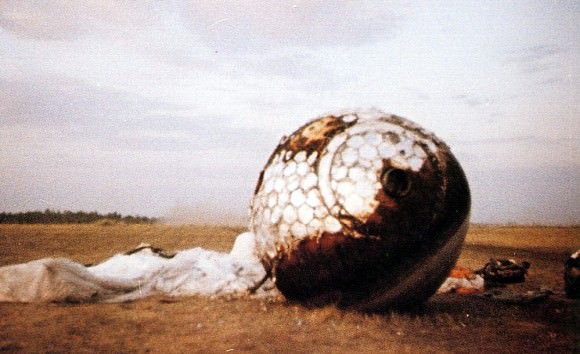
Here the reentry capsule of the Vostok 3KA-3 spacecraft (Vostok 1) is seen with charring and its parachute on the ground after landing south west of Engels, in the Saratov region of southern Russia. Gagarin ejected from the capsule at 7 km altitude and parachuted safely to the ground. Credits: alldayru.com
